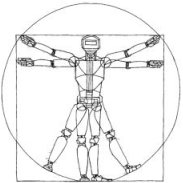Robotics: Science and Systems VI
On the Role of Hand Synergies in the Optimal Choice of Grasping Forces
M. Gabiccini and A. BicchiAbstract:
Recent work on the analysis of natural and robotic hands has introduced the notion of postural synergies as a principled organization of their complexity, based on the physical characteristics of the hand itself. Such characteristics include the mechanical arrangements of joints and fingers, their couplings, and the low-level control reflexes, that determine the specific way the concept of âhandâ is embodied in a human being or a robot. While the focus of work done so far with postural synergies has been on motion planning for grasp acquisition, in this paper we set out to investigate the role that different embodiments have on the choice of grasping forces, and on the ultimate quality of the grasp. Numerical results are presented showing quantitatively the role played by different synergies (from the most fundamental to those of higher-order) in making a number of different grasps possible. The effect of number and types of engaged synergies on the distribution of optimal grasp forces is considered. Moreover, robustness of results is investigated with respect to variation in uncertain parameters such as contact and joint stiffness.
Bibtex:
@INPROCEEDINGS{ Gabiccini-RSS-10,
AUTHOR = {M. Gabiccini AND A. Bicchi},
TITLE = {On the Role of Hand Synergies in the Optimal Choice of Grasping Forces},
BOOKTITLE = {Proceedings of Robotics: Science and Systems},
YEAR = {2010},
ADDRESS = {Zaragoza, Spain},
MONTH = {June},
DOI = {10.15607/RSS.2010.VI.030}
}
